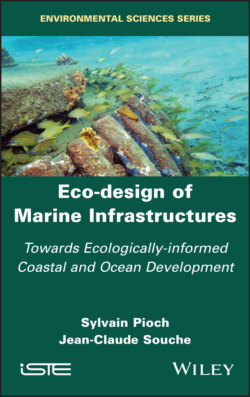Читать книгу Eco-design of Marine Infrastructures - Sylvain Pioch - Страница 9
Оглавление
Foreword
Grown-ups never understand anything by themselves, and it is tiresome for children to be always and forever explaining things to them.
Antoine de Saint-Exupéry
Our planet and our ecosystems are in danger and we must act. Of course, we hear this message every day and most of us are now aware of it. However, it is not easy to exactly identify the different challenges ahead, and it is even less easy to act accordingly.
Intended for a wide audience, this book can help provide answers. It presents, through concrete examples and testimonies, an exhaustive state of the art allowing everyone to better understand marine eco-design and the issues it addresses. It also proposes a methodology for acting differently. Although this book is primarily intended for technicians, engineers, scientists and students, it may be of interest to anyone who is curious to see how we can “develop” by taking inspiration from nature. For this book is not only the story of two men of art, it is also the work of two marine enthusiasts who, for more than 30 years, have been working for the preservation of the seabed; passionate people who have spent hundreds of hours in the water observing, marveling at marine life and trying to understand the combination of elements and the consequences on biodiversity. I have shared this passion with them for many years.
Through this book, Sylvain and Jean-Claude, who are great professionals and long-time friends, will share their universe with you. Through concrete experiences, you will discover the marine world, see through their eyes the underwater biotope and how to preserve it and perhaps feel its mysteries in order to reconcile what seems irreconcilable: the human impact of a maritime infrastructure and the preservation of biodiversity. Sylvain Pioch combines both a sixth sense of this wilderness and an exceptional scientific knowledge. His ability to understand and predict the behavior of fish and marine life will always amaze me. He is, at the same time, a renowned professor, a researcher and a talented designer, recognized throughout the world. Jean-Claude Souche is the one who makes it possible to transform concepts into sustainable developments and infrastructures. Today, Jean-Claude is a professor at IMT Mines Alès, a French engineering school, where he heads the civil engineering and sustainable building department. His international experience in marine works, his operational background as an engineer and doctor and his unwavering will to move forward make him a valuable person. With their common conviction, on a professional level, Sylvain and Jean-Claude are incredibly complementary. In this book, they have produced a thorough work on the eco-design of marine infrastructures, which for them is definitive work. This book highlights one of the great challenges of our century, that of preserving marine biodiversity through our land use planning policy and the construction of coastal and port infrastructures. The protection of the environment in terms of maritime development is no longer based on simple compensatory measures, but must, by definition for any project, preserve and promote the development of life and its diversity. I am deeply convinced that project owners, engineers, scientists and contractors can and must play a major role in promoting biodiversity and thus protecting the marine environment. One of the major challenges to come will be to know how to create industrial policies that are economically efficient and respectful of our environment. It is no longer a question of opposing environment and economy or human technology and nature, but, on the contrary, of reconciling them. This requires skill and conviction. Even though science and technology are not the only solution to the problems of today’s world, they provide technical innovation that can lead to changes in human behavior. This is the goal of this book, to allow as many people as possible to understand the stakes, to act intelligently and, finally, to think differently.
Also, throughout these pages, I urge you to think about what we will leave to future generations, I urge you to become the children of the Little Prince because it is possible to change the world, provided we all change, provided we first change ourselves.
Enjoy reading this book.
Régis DUMAY
Deputy Managing Director, Egis
